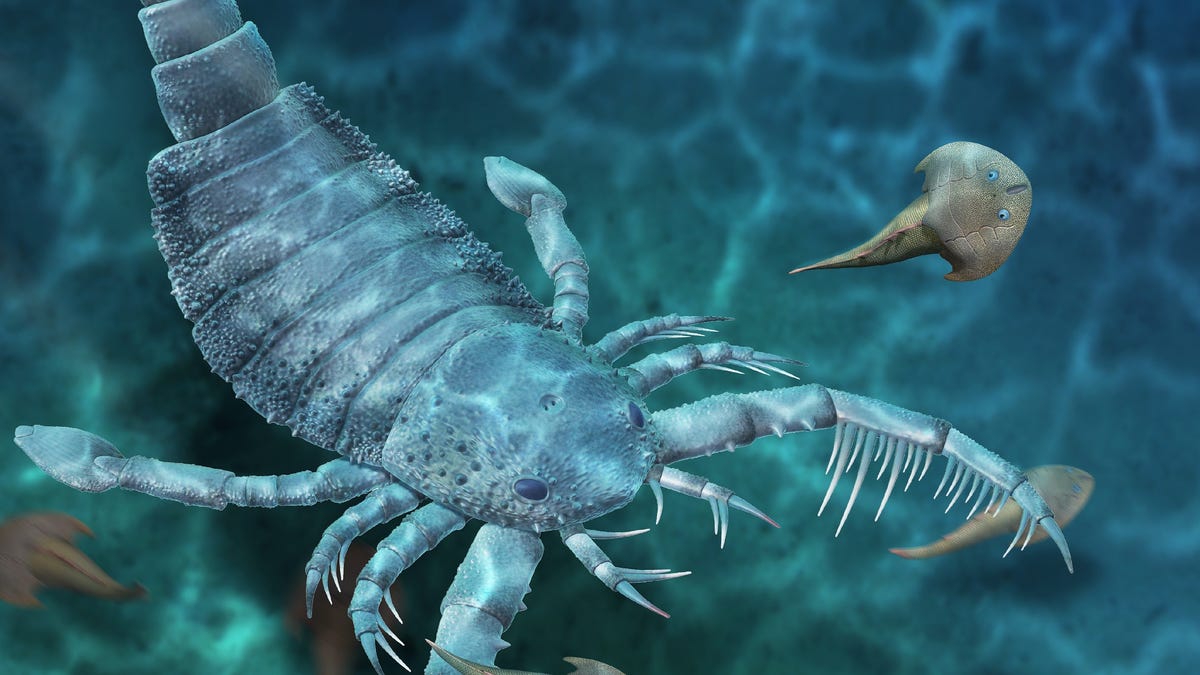Dog-sized scorpion terrorized the seafloor some 400 million years ago
A monster of the deep.

These sea dwelling scorpions grew to over a meter in length and were likely a top predator of the time.
Picture a little monster scorpion with its characteristic prickly pincers and creepy curled stinger. Now, enlarge that image until the venomous insect is over 3 feet (about a meter) long. Scientists found fossil remains of just such a creature from over 400 million years ago on China's seafloor.
Dubbed Terropterus xiushanensis, the giant swimming beast is a part of the family Mixopteridae, a class of large, scorpion-esque beings that boast spiny appendages decorated with needle-like spikes and tails reminiscent of a serrated knife.
"These limbs were presumably used for prey capture, and analogies can be drawn with the 'catching basket' formed by the spiny pedipalps of whip spiders," the study authors wrote in a paper on the find that will be published in the November issue of the journal Science Bulletin.
Figures showing the fossils found and a drawing of what this monster scorpion looked like.
"Our knowledge of these bizarre animals is limited to only four species in two genera described 80 years ago," the international group of researchers say in the study. Those relatives of the threatening insect were found around Scotland, New York, Norway and Estonia.
But this giant version of the blood-curdling arachnid, the paper states, is the first of its kind to be discovered near the region of southern China and is the oldest known member of the fearsome Mixopteridae clan. In ancient times, during the Early Silurian period between 443.8 million years ago and 419.2 million years ago, the area was known as Gondwana.
The new fossils could further our understanding of these vicious sea dwellers' diversity and reach.
"Bearing such large spiny legs and probably a poisonous telson to catch and strike the prey," the researchers write, "Terropterus is likely to have played an important role of top predators in the marine ecosystem during the Early Silurian when there were no large vertebrate competitors in South China."
As the fossils revealed varying patterns of spines and spikes on the creature, the researchers also suspect the unusually large scorpion had a few different strategies for hunting down dinner. But eventually, when sharks and other more modern predators came into play, these husky scorpions no longer ruled the Chinese sea and were presumably forced out of existence. Phew.

